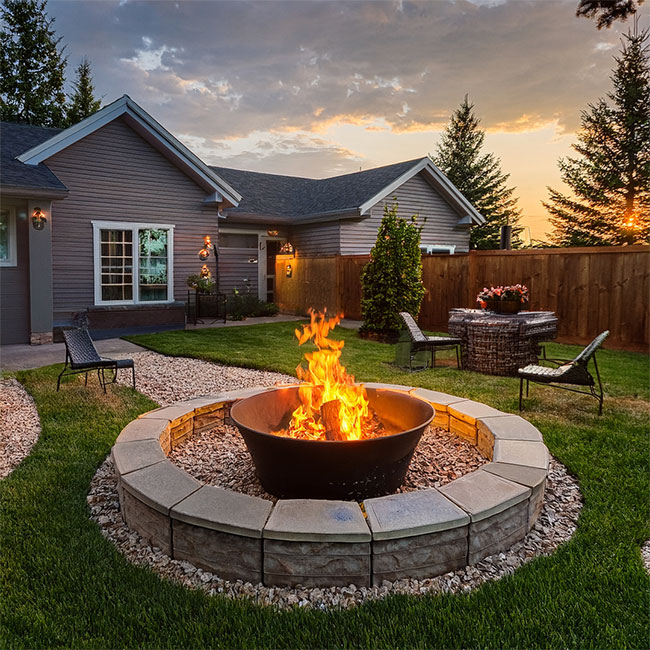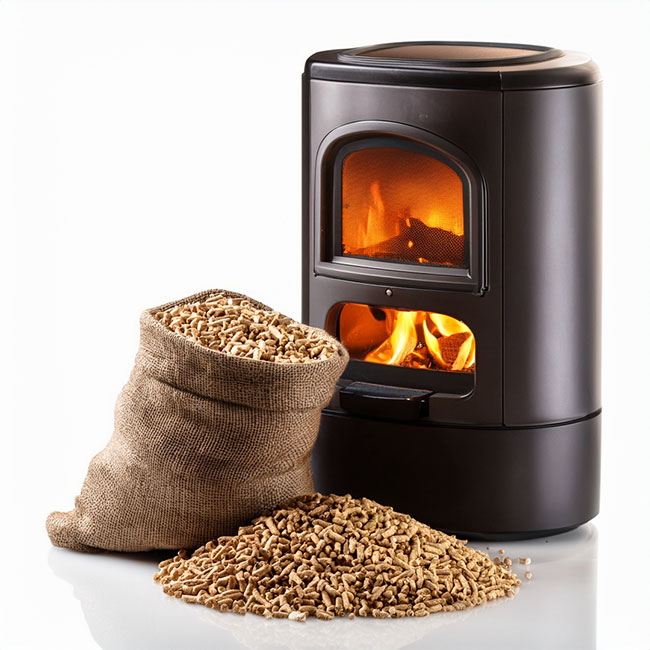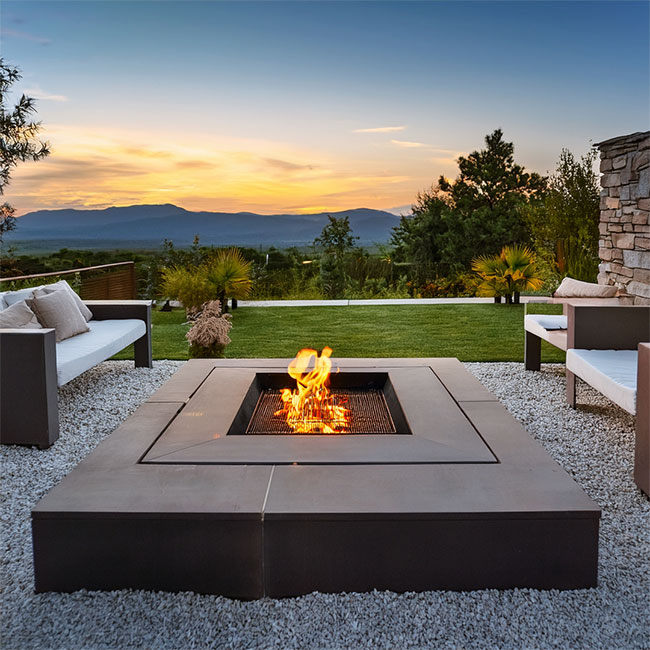
When you sit by a fire, do you ever think, “Is this perfect?” Only to have to deal with smoke, sparks or a pile of logs that are hard to light the next time? The type of wood you use makes a big difference in how enjoyable your fire is, whether it’s in your living room or in your backyard.
There are different kinds of fire fuel. Some fires are hotter than others. Some are great for setting the mood, while others are better for cooking or staying warm on a cold night.
So how do you choose the right fire fuel for your indoor or outdoor space? Let’s walk through what really matters, from convenience and cost to sustainability and safety.
1. Think About Where You’ll Use It
Indoor fireplaces, outdoor fire pits, patio heaters or chimineas all have different requirements.
- Indoor spaces often need cleaner-burning options with minimal smoke – like seasoned hardwood, pellets, or even gas.
- Outdoor spaces give you more flexibility. Wood is a classic go-to for backyard fire pits or chimineas, while propane and natural gas are great for built-in patio features.
Each setup has its own needs when it comes to ventilation, heat output and ease of clean-up.
2. Wood: The Classic Choice
There’s something timeless about a wood-burning fire – the crackle, the glow, the smell. It’s also one of the most versatile options, whether you’re warming up inside or roasting marshmallows outside.
But not all firewood is the same. Hardwoods like oak, maple and hickory burn longer and hotter than softwoods like pine or spruce. Properly seasoned wood (which has been dried for at least 6–12 months) burns cleaner, with less smoke and creosote buildup.
If you’re relying on wood, sourcing it matters. A trustworthy firewood supplier in Connecticut can make sure you’re getting high-quality, properly seasoned hardwood – so you spend less time fighting to keep it lit and more time enjoying the fire.
3. Propane: Clean and Convenient
Propane is an excellent choice if you prioritize ease and low maintenance. It’s popular for patio heaters, fire tables and outdoor grills because it ignites instantly, burns clean and doesn’t leave behind ashes or debris.
It’s also adjustable, meaning you can control the flame size and heat level with a knob or switch. That makes it ideal for social settings where you want consistent heat without the smoke or mess.
On the downside, propane lacks the rustic ambiance of wood. It’s also a fuel you need to refill regularly, so keeping an extra tank on hand is a smart move.
4. Pellets: Efficient and Eco-Friendly
Pellet fuel, usually made from compressed sawdust or recycled wood waste, is growing in popularity for both indoor and outdoor fire features. Pellet stoves are known for their efficiency and low emissions, and some outdoor fire pits are now pellet-compatible too.
Benefits include:
- Even, consistent burn
- Minimal smoke
- Easy cleanup
- Great heat output
Pellet fuel burns hotter and cleaner than wood, and it’s often considered a more sustainable choice. Just note that you’ll need a compatible stove or pit, and pellet storage is a bit more finicky than stacking logs.

5. Natural Gas: A Built-In Option
If your home is already connected to a natural gas line, installing a gas fireplace or outdoor feature might make perfect sense. Similar to propane, natural gas burns cleanly and requires minimal effort, simply flipping a switch to start.
You never have to worry about running out of fuel, which is a major plus during cold winters. The downside? Installation costs can be high, and you lose some of the flexibility that wood or portable fuels offer.

6. Charcoal: Best for Cooking, Not Coziness
Charcoal deserves a quick mention. While it’s not ideal for ambiance or staying warm, it’s still a go-to for grilling and fire-based cooking. Lump charcoal burns hotter and faster than briquettes and gives food a natural smoky flavor without a lot of effort.
Just keep in mind: it’s not the right choice for general fire pit use—smoke levels are higher, and heat control is more difficult.
7. Sustainability
If you’re trying to make eco-friendly choices, it’s worth looking at how your fuel is sourced and how cleanly it burns.
- Wood is renewable but should come from responsible, local sources to reduce environmental impact.
- Pellets are often made from wood waste, making them a smart recycling option.
- Propane and gas are fossil fuels—clean-burning but non-renewable.
Choosing a firewood supplier supports local businesses and cuts down on emissions from transportation. It also ensures your firewood is better suited to the regional climate and burning conditions.
8. Storage and Safety
Wood needs to be kept dry and stacked properly to stay ready for use. Propane tanks need safe, ventilated storage. Pellets must stay out of moisture’s way.
Also, consider fire safety. Always follow manufacturer guidelines, use a spark screen if needed, and never burn anything that isn’t designed for your fire feature.
9. Budget and Refill Considerations
Your choice of fuel might also come down to budget and convenience.
- Firewood can be cost-effective, especially when bought in bulk or seasoned yourself—but it takes time and storage space.
- Propane and gas have ongoing costs and may require professional installation.
- Pellets offer great efficiency, requiring less fuel to produce the same amount of heat.
If convenience is your top priority, propane or gas are likely the best options. If you prefer a traditional fire experience, wood remains the preferred choice.
Find What Works for Your Space
One “best” fuel isn’t necessarily the best. It depends on how you use your fire, how much work you’re ready to put in, and the mood you want to create.
If you want a classic fire feel, hardwood from the best firewood provider in your area is a good bet. If you want easy use and clean heat, propane or gas might be the best choice for you, and for economy that is good for the environment, pellet fuel is worth looking into. Having the right fuel on hand for any fire, inside or out, makes it faster, warmer, and a lot more fun.
 My Favourites
My Favourites










Speak Your Mind